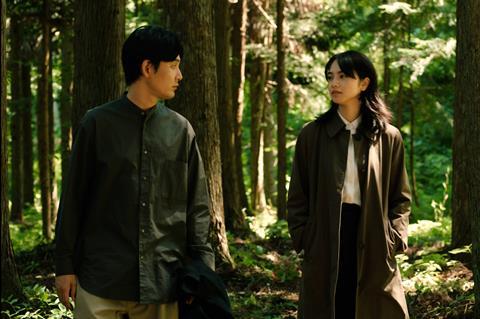
An obsession with a remote Japanese island inspired director Tetsuya Tomina and producer Mina Hatanaka to create Who Were We?, which plays in competition at this year’s Tokyo International Film Festival.
The Japanese feature, which centres on two lost souls with no memory of their past, will receive its world premiere at TIFF on October 25 before being released in Japan in 2024. HKIFF Collection picked up worldwide rights to the film, excluding Japan, before the festival began and mainland China rights have already been acquired by Beijing Jungle Jim Culture Media.
Who Were We? marks Tomina’s second feature after 2018’s Blue Wind Blows, which was set on the same island of Sado, located off the northwest coast of Japan’s main inland.
“In Japan, Sado is mostly known as a place where exiles were once sent,” Tomina tells Screen. “For that reason, it has a pretty negative image, but when we went there, we were impressed by the friendly spirit of the people, the great food, and the nature. It has landscapes you simply can’t see in places like Tokyo.”
While shooting his first feature, Tomina was struck by a specific feature of Sado’s landscape: a mountain split asunder by the extensive gold and silver mining that took place on the island over the course of 400 years (the mine was in operation until 1989). That mountain not only features heavily in Who Were We?, but inspired its themes of death and resurrection, says the director.
“Researching Sado, I learned that a lot of people were sent there as forced laborers, faced some horrible working conditions, and died there,” says Tomina. “I imagined some of those souls might still be haunting the island, and when I saw that split in the mountain, I pictured it as a kind of gateway between this world and the next.”
The mountain also had an impact on the film’s visual style: the director decided to shoot in the 4:3 aspect ratio so it would fill the whole frame.
Attracting top talent
Produced by Tomina and Hatanaka’s company Tetsuya To Mina Film, Who Were We? is permeated with a deliberate, languid pace that the director ascribes to his “physiological instincts” as a filmmaker.
“I’m not a fan of films that have a lot of emotion or sentiment on display,” he says. “What I really like – and this may sound simple – is when the actors are simply ‘there’ inhabiting their roles. My favourite movies aren’t based so much on storytelling, but on the presence of the people onscreen.”

In Who Were We?, those onscreen presences include leads Nana Komatsu and Ryuhei Matsuda as well as veterans Min Tanaka and Shinobu Otake in supporting roles. Kamatsu is known for role in Tetsuya Nakashima’s The World Of Kanako and Martin Scorsese’s Silence while Matsuda’s credits include Nagisa Ōshima’s Taboo, which played in Competition at Cannes, Yuya Ishii’s The Great Passage and Kentaro Otani’s Nana .
Tomina attributes the chance to shoot in the unique environment of Sado as one reason he and Hatanaka – who are husband and wife – were able to attract a cast of A-list actors for their “small movie”.
“It’s quite a surreal film, and when I thought about who might be convincing in bringing it to life, Ryuhei Matsuda popped into my mind, and we thought Nana Komatsu would play well off him,” says Tomina. “They were both our first choice, and they both said yes.”
“I think a big chunk of our initial audience will be fans of (Komatsu and Matsuda),” says Tomina. “It’s not the most accessible film out there, but I hope they enjoy it. I hope it’s an interesting experience for them.”
A different planet
Tomina studied filmmaking at the London Film School in the UK. When asked if this gives him a different perspective than most Japanese filmmakers, he says he has not had enough contact with mainstream Japanese filmmaking to even make the comparison.
“I feel like I’m on a different planet from the Japanese industry,” he says. “I’m just doing things the way I know how.”
Producer Hatanaka, who has more experience in the industry, agrees. “I think a film like this would be hard to make in Japan’s current environment if that weren’t the case,” she says.
Speaking about their relationship as both a couple and a filmmaking team, Hatanaka says one advantage is that “from the time we wake up from the time we go to sleep, we’re constantly thinking about the film together, so in a way, there’s no wasted time.”
“On a small movie like this, trust is incredibly important,” adds Tomina. “In that sense, it’s a big advantage.”
Looking ahead, Tomina and Hatanaka are in pre-production on two films, one of which is set on Sado.
























No comments yet